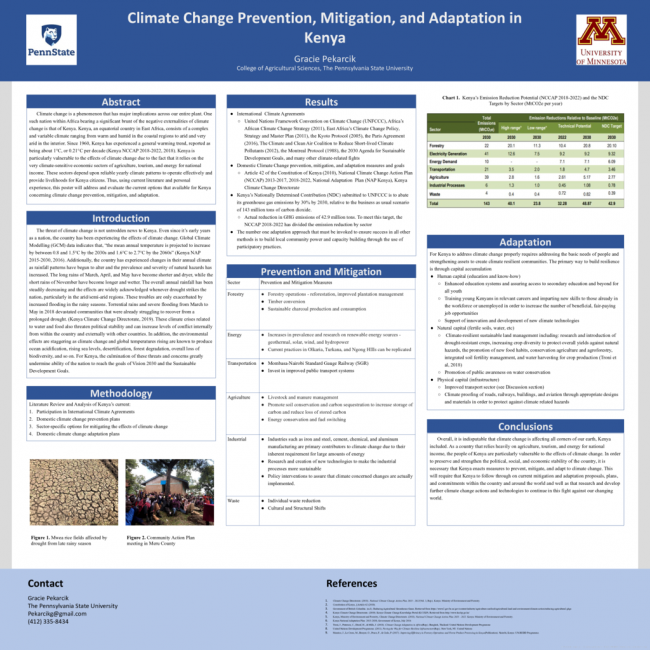Climate change is a phenomenon that has major implications across our entire plant. Within just the continent of Africa, The Fifth Assessment Report of the Intergovernmental Panel on Climate Change (IPCC) “presented strong evidence that surface temperatures across Africa have increased by 0.5-2°C over the past 100 years, and from 1950 onward climate change has changed the magnitude and frequency of extreme weather events” (Kenya NCCAP 2018-2022, 2018). One such nation within Africa bearing a significant brunt of the negative externalities of climate change is that of Kenya. Kenya, an equatorial country in East Africa, consists of a complex and variable climate ranging from warm and humid in the coastal regions to arid and very arid in the interior. Since 1960, Kenya has experienced a general warming trend, reported as being about 1°C, or 0.21°C per decade (Kenya NCCAP 2018-2022, 2018). Kenya is particularly vulnerable to the effects of climate change due to the fact that it relies on the very climate-sensitive economic sectors of agriculture, tourism, and energy for national income. These sectors depend upon reliable yearly climate patterns to operate effectively and provide livelihoods for Kenya citizens. Climate change has already been and continues to be a threat to the political, social, and economic stability of Kenya and the world as a whole. Thus, using current literature and personal experience, this poster will address and evaluate the current options that available for Kenya concerning climate change prevention, mitigation, and adaptation.
Day
Tuesday Poster Session
Related Conference Themes
Electricity Generation
Land Use
Materials & Waste
Transportation


